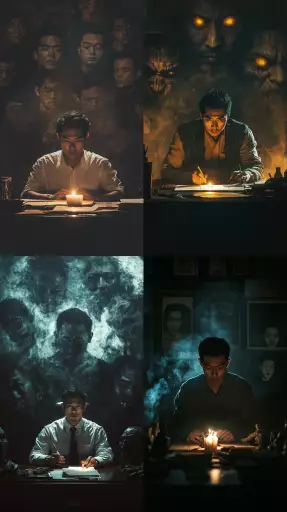Explore the Best AI Image Gallery

AI-Generated Images: Reshaping the Creative Landscape
The world of design is undergoing a radical transformation, fueled by the emergence of artificial intelligence (AI) and its ability to generate stunningly realistic images. AI image generators are no longer science fiction; they are powerful tools in the hands of designers, artists, and businesses, revolutionizing how we create and consume visual content.
Unlocking Creative Potential
AI image generators offer a plethora of possibilities for designers. They can:
- Generate unique concepts: Overcoming creative blocks by producing diverse ideas and visuals that spark inspiration.
- Speed up design workflows: Quickly iterate through design iterations, saving valuable time and resources.
- Personalize designs: Tailor imagery to specific audiences or preferences, creating more engaging and impactful experiences.
- Explore new aesthetics: Experiment with unconventional styles and artistic expressions, pushing the boundaries of visual design.
Applications Across Industries
The applications of AI-generated images span a wide range of industries:
- Advertising and Marketing: Creating eye-catching visuals for campaigns, product mockups, and social media content.
- Web and App Design: Generating user interface elements, website backgrounds, and illustrations that enhance the user experience.
- Publishing and Media: Producing covers, infographics, and editorial illustrations to captivate audiences.
- Fashion and Apparel: Designing clothing patterns, visualizing new collections, and creating virtual fashion shows.
- Gaming and Entertainment: Developing game assets, character designs, and immersive environments.
Ethical Considerations
While AI-generated images offer immense potential, it is crucial to address the ethical considerations associated with this technology:
- Copyright and Intellectual Property: Establishing clear guidelines on ownership and usage rights for AI-generated content.
- Bias and Representation: Ensuring that AI models are trained on diverse datasets to avoid perpetuating harmful stereotypes or biases in the generated imagery.
- Transparency and Accountability: Making it transparent how AI images are created and who is responsible for their outputs.
- Job Displacement: Addressing concerns about potential job losses in creative fields due to automation.
Future Trends
The field of AI image generation is rapidly evolving. Here are some anticipated future trends:
- Increased Realism and Detail: AI models will continue to produce images that are increasingly indistinguishable from real photographs.
- Personalized Content Creation: AI will enable users to generate highly personalized visuals tailored to their specific needs and preferences.
- Interactive and Dynamic Images: AI-generated images may become interactive, responding to user input and creating dynamic visual experiences.
- Integration with Other Technologies: AI image generation will likely be integrated with other technologies, such as VR/AR and blockchain, to create even more immersive and innovative applications.
The integration of AI-generated images into the design industry is poised to have a profound impact. By embracing this technology responsibly and ethically, designers can unlock new creative frontiers, enhance their workflows, and shape the future of visual communication.













![**Representation: A teenager smiling while thinking about a friendly dog, a comic-style thought bubble with a friendly dog inside. Graphic style: Line drawing, cartoon style, influenced by Franco-Belgian comics, thick black lines, simplified design, vector, black and white only, in the style of Keith Haring or the French comic strip "Alinéa". [IMPORTANT]: A single continuous line extending from one side of the image to the other, minimalist, strong outlines, line drawing, without lifting the hand, ultra-simplified, no shading, entirely white image, drawing created in the center of a sheet of paper. --ar 16:5** - <@627984126871470085> (fast)](https://images.ai-img.art/thumbnails/150/6fc850f638e3dee0c4b121acecad2c8419e02bdeac7f871d625f1003c1c3abe1.webp)



![**Representation: A dog acting as a private tutor to a child. The dog holds a ruler in its paw and stands at the blackboard to explain a dog diagram to the child. Graphic style: Line drawing, cartoon style, influenced by Franco-Belgian comics, thick black lines, simplified design, vector, black and white only, in the style of Keith Haring or the French comic strip "Alinéa". [IMPORTANT]: A single continuous line extending from one side of the image to the other, minimalist, strong outlines, line drawing, without lifting the hand, ultra-simplified, no shading, entirely white image, drawing created in the center of a sheet of paper. --ar 16:5** - <@627984126871470085> (fast)](https://images.ai-img.art/thumbnails/150/7a854648a81e51241dcca8d24dd6e3bfcf07ad1df51baf401c9b729f4cf411fa.webp)







](https://images.ai-img.art/thumbnails/150/157712d76865d557120f9baf988de3d0525225295a2789c89bf2c4a5a96a03d1.webp)


](https://images.ai-img.art/thumbnails/150/9d51c5e673b4f2068b7b01abc35425a06f173b76303adf9ad29ca14302c25b18.webp)




](https://images.ai-img.art/thumbnails/150/51c93500396faff4e7fa8b42bc68033067b16b2230e3496e95c482a581ff0fe9.webp)





![**Representation: A dog acting as a private tutor to a child. The dog holds a ruler in its paw and stands at the blackboard to explain a dog diagram to the child. Graphic style: Line drawing, cartoon style, influenced by Franco-Belgian comics, thick black lines, simplified design, vector, black and white only, in the style of Keith Haring or the French comic strip "Alinéa". [IMPORTANT]: A single continuous line extending from one side of the image to the other, minimalist, strong outlines, line drawing, without lifting the hand, ultra-simplified, no shading, entirely white image, drawing created in the center of a sheet of paper. --ar 16:5** - Variations (Strong) by <@627984126871470085> (fast)](https://images.ai-img.art/thumbnails/150/f4e034998ccd869d8a061fd12017514fcd92210eb33d4222dc9b54716223f4dd.webp)




